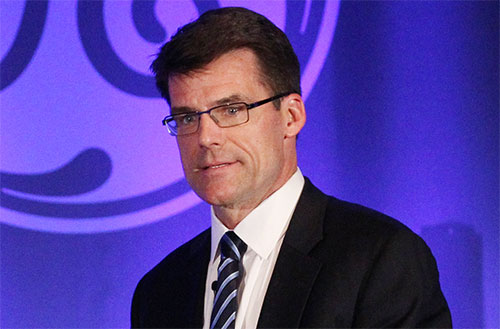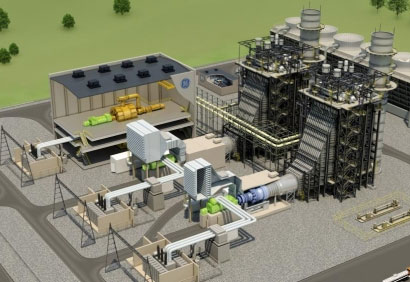Digital solutions key to global energy efficiency

“There’s a major digital transformation going on in the energy industry, and GE is driving it. Increased use of renewables, resiliency issues and sustainability concerns are just a few drivers behind the industry’s need to transform, and “digitisation is the single biggest enabler of that change.”
| Who is Steam Power Systems? Steam Power Systems has about 8,000 employees across 30 countries. It is part of GE with 300,000 employees global and in the region. Steam Power Systems has more than a century in steam expertise, and installed 320 gigawatts across the globe with all fuels available: from coal, to nuclear energy to biomass. This large installed base allows Steam Power Systems’ engineers to get constant feedback from running power plants to continuously improve its offering, from the hardware to the software. |
It was announced that the first GE Digital Power Plant customers are from the US. Why is the ASEAN region in focus now?
The world will need 50 per cent more electricity generated in the next 20 years, 70 per cent of this need will come from developing regions, with this region accounting for almost 50 per cent. These trends show that it is high time for us to set up a foothold in the region.
In fact, GE has been here for over 100 years. About 25 per cent of the electricity in the larger region is generated by GE technology. At places like Malaysia, it is over 40. A major portion of the wind turbines in Vietnam are from GE. In Malaysia, we produce all the steam power. In the meanwhile, Thailand will see a revolution of high efficiency gas power. The ASEAN region will be the fastest growing segment of the power industry in the world.
Many countries worldwide are phasing out coal fired plants due to concerns over pollution. How do you address this concern with your advanced technology?
We have to reduce emission levels, by a sizeable margin. That is why we are introducing the supercritical process. This is the most efficient technology at hand. If you replace the old plants, you already make astounding saving on resources. The world needs more electricity as the population grows. People want affordable, accessible, reliable, and sustainable power.
It really comes down to what resources a country has. Do they have coal, gas or wind? The power mix will change based on the country, but if we are going to deploy wind or gas or coal or nuclear-based plants, we would like to have the highest efficiency. Over the next 50 years, you will see coal fired plants dismantled, but they are still going to produce 20-25 per cent of the total global electricity demand.
Most people want to turn to renewable resources because of all the benefits. The question is, how much of their energy mix can be made up of these? Do they have enough solar resources, do they have wind, do they have the transmission capacity? I would also like to point out that a lot of countries in the region need power at scale. You are not going to be able to do all that with just renewables—that is why we promote a combination. The best way to think about it would be to burn the same coal and generate more power and less emission.
The Digital Power Plant - the answer to the world’s need for cleaner and more flexible power The Digital Power Plant is an Industrial Internet solution that couples software and hardware for the analysis and optimisation of a power plant. The Digital Power Plant creates a “digital twin” of the physical power plant, offering real-time simulation while monitoring every asset in the plant. Based on Predix, GE’s operating software for the Industrial Internet, the Digital Power Plant is not limited to GE components. It can monitor any asset in a plant, providing “intelligent response and actions”. The platform optimises existing infrastructure and provides for greater efficiency and output, more flexibility for renewables integration and improved grid stability. Savings are expected to top $230 million over the lifetime of a new combined-cycle gas power plant and $50 million for an existing combined-cycle power plant. That accounts for $75 billion in savings across the industry. GE’s first Digital Power Plant customers are New Jersey's Public Service Enterprise Group (PSEG) for its gas-fired generators, and multi-state generator Exelon for nuclear, gas and wind power. |
How can we ultimately achieve this?
That’s where digital solutions come in. If you have to upgrade these plants, there is a higher chance that the existing hardware will become obsolete. However, a lot of those plants can now operate more efficiently than before. The analytics allow them to improve efficiency by 1 per cent.
Financial issues are a challenge for developing countries like Vietnam. How can this be addressed if domestic power firms choose to get digitally transformed?
Affordability often comes first, which is measured in dollar per kWh. If you do not consider efficiency in long-term costs, you can sway it one direction. Vietnam is changing to ultra-supercritical from supercritical systems, because a model with lower emissions and lower coal consumption turns out to be better in the long term.
China has been aggressively marketing its coal-fired equipment with huge financial backing, particularly in Vietnam. How does your high-efficiency equipment compete with them?
Financing is a major factor, but so is efficiency, as is long term serviceability cost. As people run through these trade-offs, when they put it all together, often times our offers come out on top as the most viable choice.
What the stars mean:
★ Poor ★ ★ Promising ★★★ Good ★★★★ Very good ★★★★★ Exceptional
Latest News
More News
- Addressing Vietnam's energy challenges with aeroderivative gas turbines (February 28, 2023 | 09:33)
- How to sprint ahead in 2023’s worldwide energy priorities (February 08, 2023 | 13:55)
- Boosting Vietnam's grid stability through gas turbine technology (November 22, 2022 | 20:02)
- Healthcare trio collaborates to provide thousands of free breast scans (October 27, 2022 | 17:19)
- GE Healthcare's vision for AI-backed radiology (September 29, 2022 | 11:53)
- GE brand trio to shape the future of key industries (July 19, 2022 | 15:35)
- GE unveiling brand names and defining future (July 19, 2022 | 15:16)
- GE: the shortest route towards sustainability (July 18, 2022 | 08:00)
- Be proactive in an uncertain world (May 20, 2022 | 11:40)
- GE secures first 9HA combined cycle power plant order in Vietnam (May 16, 2022 | 17:06)


















 Mobile Version
Mobile Version